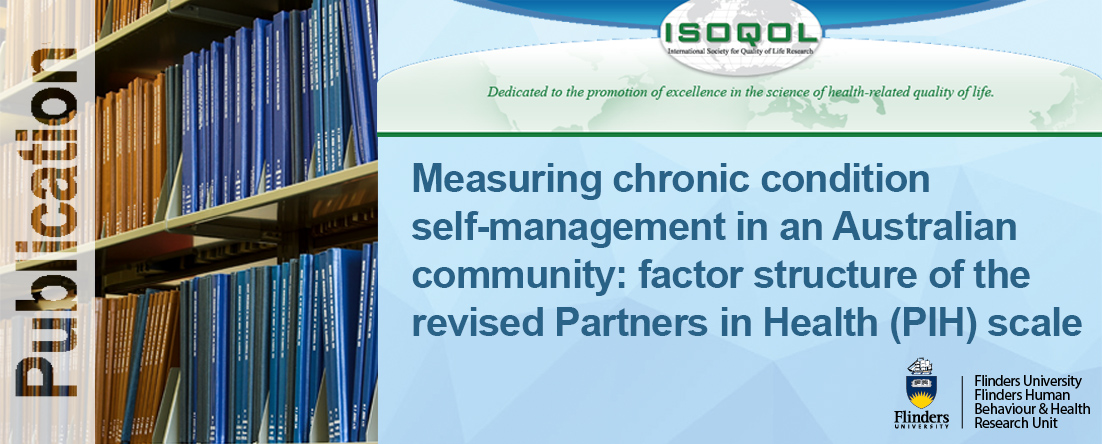
Measuring chronic condition self-management in an Australian community: factor structure of the revised Partners in Health (PIH) scale
David Smith, Peter Harvey, Sharon Lawn, Melanie Harris and Malcolm Battersby.
Quality of Life Research – Published 18 July 2016
Abstract
To evaluate the factor structure of the revised Partners in Health (PIH) scale for measuring chronic condition self-management in a representative sample from the Australian community.
Methods
A series of consultations between clinical groups underpinned the revision of the PIH. The factors in the revised instrument were proposed to be: knowledge of illness and treatment, patient–health professional partnership, recognition and management of symptoms and coping with chronic illness. Participants (N = 904) reporting having a chronic illness completed the revised 12-item scale. Two a priori models, the 4-factor and bi-factor models were then evaluated using Bayesian confirmatory factor analysis (BCFA). Final model selection was established on model complexity, posterior predictive p values and deviance information criterion.
Results
Both 4-factor and bi-factor BCFA models with small informative priors for cross-loadings provided an acceptable fit with the data. The 4-factor model was shown to provide a better and more parsimonious fit with the observed data in terms of substantive theory. McDonald’s omega coefficients indicated that the reliability of subscale raw scores was mostly in the acceptable range.
Conclusion
The findings showed that the PIH scale is a relevant and structurally valid instrument for measuring chronic condition self-management in an Australian community. The PIH scale may help health professionals to introduce the concept of self-management to their patients and provide assessment of areas of self-management. A limitation is the narrow range of validated PIH measurement properties to date. Further research is needed to evaluate other important properties such as test–retest reliability, responsiveness over time and content validity.
Read the full journal article here: http://link.springer.com/article/10.1007/s11136-016-1368-5
